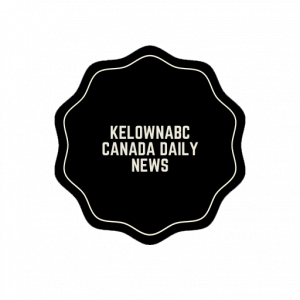Photo: Friends of Robert Lake Society.
A fragile and rare ecosystem in Kelowna is changing forever as the community grows around it.
Robert Lake, just south of the Glenmore landfill, is unique for the salt content in its water. It provides a refuge for birds and amphibians rare in the BC Interior.
The lake has no outlet and used to completely dry up “quite regularly,” according to Ian Walker, the vice president of the Friends of Robert Lake Society and retired biology professor at UBC Okanagan.
“You’d often go past and you can see these little roll winds of white salty dust kind of blowing around,” he said.
But for the past four to five years that hasn’t happened and increasing water levels are creating problems for nearby property owners, the City of Kelowna and the animals that rely on the lake.
In an application in September to the Agricultural Land Commission, Curtis Road residents Arthur and Linda Scheffler asked for permission to raise their lands up with a meter of fill.
“The nearby Robert Lake, which used to dry up every summer, has not done so in four years and is encroaching on our property,” the application says.
“This proposal is to enhance and improve existing soil conditions as well as secure existing pasture from rising water levels. This results in ability to continue to provide grazing for livestock.”
Because the lake used to dry up regularly, the land beneath it is owned by a mix of private landowners and local government.
Walker says it is hard to say why Robert Lake has stopped drying up, even during recent significant drought years, but noted the lake stopped doing so around the same time John Hindle Drive was extended in 2018. There was concern at the time of construction that the drainage from the roadway could make it into Robert Lake.
Walker said it is also possible that a region-wide change in the water table could be contributing. Stump Lake south of Kamloops, which also has no outflow, has also had flooding challenges in recent years.
A provincial groundwater observation well nearby at the airport shows the water table increasing over the past several years.
During the 2017 and 2018 flood years, the City of Kelowna says it pumped water from the landfill to Robert Lake and in turn pumped water from Robert Lake into Brandts Creek.
The discharge of that water from Robert Lake significantly lowered the lake’s salinity through dilution.
Readings in 2016 showed about 10.2 parts per thousand of salt content in the lake water. In 2019, after the lake had been pumped, those readings dropped to about four parts per thousand, according to the Friends of Robert Lake Society. For context, seawater is about 35 parts per thousand.
Walker says if salinity isn’t maintained in the lake, the species that call it home will likely disappear.
It is believed Robert Lake is the only nesting place in BC of the black-neck stilt. It is one of very few nesting sites in the province of American avocets.
The spadefoot toad, a threatened species in Canada, is also found at the north end of the lake.
As the lake freshens, Walker says cattail plants will likely take over and strangle the shallow waterbody, further changing the ecosystem.
A report generated for the Central Okanagan Lake Trust determined that where Robert Lake is today was a meadow in the earlier part of the 20th century. It is believed the meadow basin filled with water due to agriculture, which then became saline when the Kelowna landfill was built and displaced Alki Lake — the evaporative basin where the dump is now located.
The Friends of Robert Lake Society says the soils where the Robert Lake meadow sits have long been alkaline. “So, when hydrological conditions caused the basin to fill with fresh water, the salts in the soil were drawn into solution to make the water salty.”
Walker says their group has been in talks with the city, encouraging them to find a way to divert water around the lake rather than through it.
In a statement to Castanet News, Kelowna utility planning manager Rob MacLean says the water in Robert Lake is the property of the provincial government.
“The city is investigating infrastructure and water license options for landfill stormwater to bypass Robert Lake and discharge directly to Brandts Creek under emergency conditions,” MacLean said. “The city is not looking for any water level control on Robert Lake.”
While MacLean’s statement acknowledged the pumping of the lake in 2017 and 2018, there was also an uproar from residents over plans to pump dump water into the lake in 2019.
Should the salinity of Robert Lake be lost, it is possible the impact on wildlife will be beyond the lake itself.
The Friends of Robert Lake Society says saline lakes are rare in BC and may happen in small clusters on the landscape that are geographically isolated from each other.
“This makes it difficult for many of the salt species adapted to disperse from one lake to another because of the inhospitable habitat between. This lack of connectivity among saline habitats can magnify the effects of human disturbance of a single lake,” the nonprofit said online.
“The City of Kelowna landfill largely eradicated Alki Lake… in a time before the conservation value of this type of ecosystem was appreciated, and now Robert Lake is being altered even though we now have a much better understanding.”









